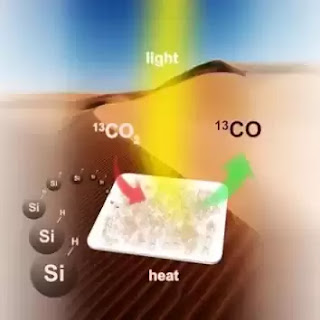Consistently, people advance environmental change and an Earth-wide temperature boost and entirely likely our own possible eradication by infusing around 30 billion tons of carbon dioxide into the air.
A group of researchers from the University of Toronto (U of T) accepts they've figured out how to change over every one of these discharges into vitality rich fuel in a carbon-unbiased cycle that uses an exceptionally plenteous normal asset: silicon. Silicon, promptly accessible in sand, is the seventh most-plentiful component in the universe and the second most-bottomless component in the world's covering.
Converting carbon dioxide outflows to vitality isn't new: there's been a worldwide race to find a material that can proficiently change over daylight, carbon dioxide and water or hydrogen to fuel for quite a long time. In any case, the concoction steadiness of carbon dioxide has made it hard to locate a handy arrangement.
"A science answer for environmental change requires a material that is an exceptionally dynamic and particular impetus to empower the transformation of carbon dioxide to fuel. It additionally should be made of components that are minimal effort, non-dangerous and promptly accessible," said Geoffrey Ozin, a science teacher in U of T's Faculty of Arts and Science, the Canada Research Chair in Materials Chemistry and lead of U of T's Solar Fuels Research Cluster.
In an article in Nature Communications distributed August 23, Ozin and associates report silicon nanocrystals that meet every one of the criteria. The hydride-ended silicon nanocrystals - nanostructured hydrides for short - have a normal distance across of 3.5 nanometres and highlight a surface range and optical assimilation quality adequate to proficiently gather the close infrared, noticeable and bright wavelengths of light from the sun together with an effective concoction diminishing specialist at first glance that productively and specifically changes over vaporous carbon dioxide to vaporous carbon monoxide.
The potential result: vitality without destructive outflows.
"Making utilization of the diminishing force of nanostructured hydrides is a reasonably unmistakable and monetarily intriguing system for making fills straightforwardly from daylight," said Ozin.
The U of T Solar Fuels Research Cluster is attempting to discover ways and intends to expand the movement, upgrade the scale, and support the rate of generation. Their objective is a research center showing unit and, if effective, a pilot sun based refinery.











No comments:
Write comments